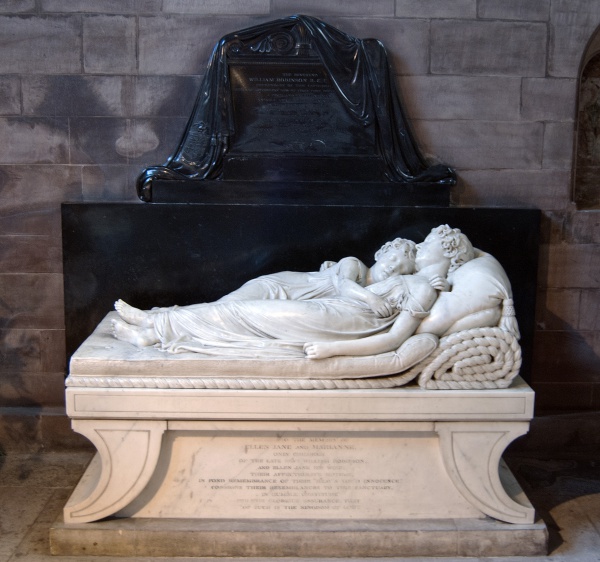Facts About The Sleeping Children
"The Sleeping Children" is a poignant marble sculpture by Francis Chantrey that depicts the serene image of Ellen-Jane and Marianne Robinson, two young sisters peacefully asleep in each other's arms. Commissioned by their grieving mother, Ellen-Jane Robinson, following the tragic deaths of her daughters in 1813 and 1814, this piece found its home in Lichfield Cathedral in 1817. Celebrated as one of Chantrey's masterpieces, the sculpture is renowned for its exquisite beauty and profound emotional depth.
The story behind the sculpture is heart-wrenching. Ellen-Jane Robinson endured the loss of her husband to tuberculosis in 1812, followed by the deaths of her beloved daughters in the ensuing years. In her sorrow, she commissioned Chantrey to immortalize her children based on a vision she shared with him. Crafted from white marble by Chantrey's assistant, Mr. F. A. Lege, the statue features the younger sister tenderly holding a bunch of snowdrops, symbolizing purity and the fleeting nature of life. Completed in 1816, the sculpture was showcased at the Royal Academy Art Exhibition before being permanently placed in Lichfield Cathedral.
"The Sleeping Children" has left a lasting impression not only in the world of art but also in literature. Poet William Lisle Bowles wrote a poem about the sculpture in 1826. More recently, it has appeared on television, including the BBC program "Romancing the Stone: The Golden Ages of British Sculpture" in 2011. The enduring beauty and poignant portrayal of the sleeping children continue to draw admiration and emotional responses from visitors to Lichfield Cathedral, securing its place as a cherished and significant work of art.

 Ireland
Ireland